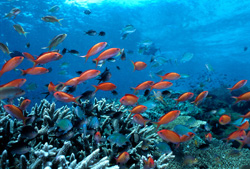The role of biodiversity in the health of marine ecosystems
Single-celled microorganisms such as bacteria and Archaea play an important part in the cycling of carbon and sulphur in the oceans. The role of species biodiversity in this and other marine ecosystem processes is not well understood. Several leading research institutes combined forces during the BASICS project to shed some light on these matters. One of the participants, the Centre National de la Recherche Scientifique (CNRS), spent one and a half years exploring the Bay of Villefranche off the southern coast of France. They found considerably high levels of biodiversity. In fact, nearly 30 different phylotypes were identified. Cluster analysis, a powerful statistical tool, was used to group the phylotypes according to chronological criteria. The marine microbiologists with CNRS discovered that there was a varied reaction to external factors such as phytoplankton blooms and Saharan dust episodes. In addition, the phylotypes were further differentiated with respect to their position in relation to the thermocline, the lower boundary of the mixed layer of the ocean. Finally, Artificial neural networks (ANNs) were employed in an attempt to establish relationships between phylotypes and marine ecosystem functions. The researchers at CNRS concluded that the non-linear nature of the ANN results reflected the inherent complexity of the system. While evidence of important links was uncovered, further research has been recommended by the BASICS participants.







